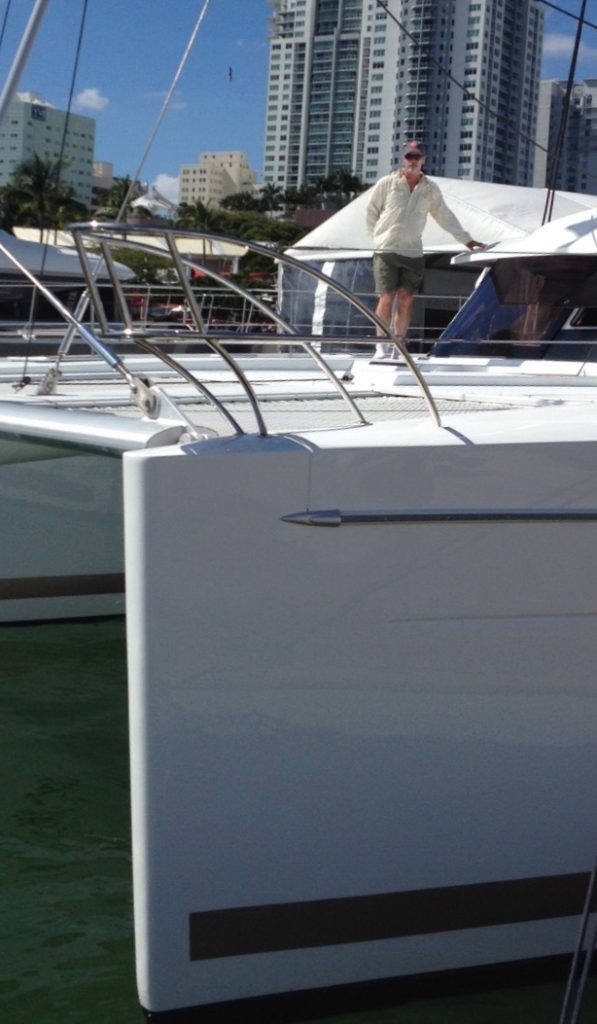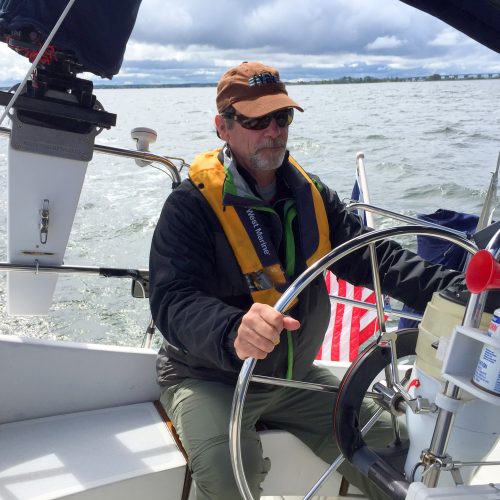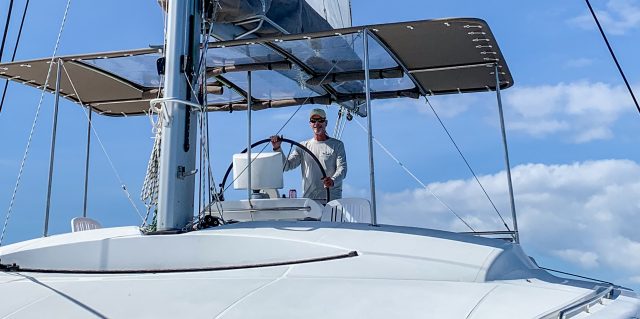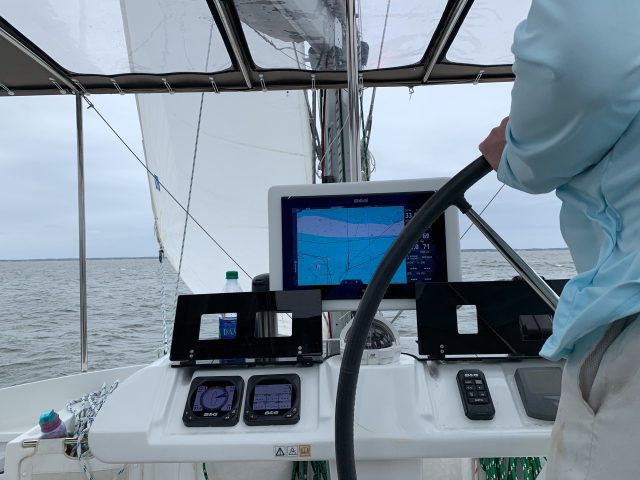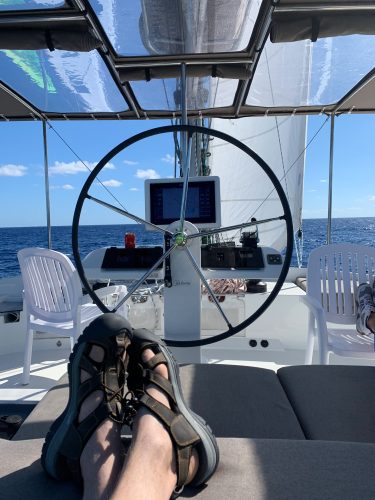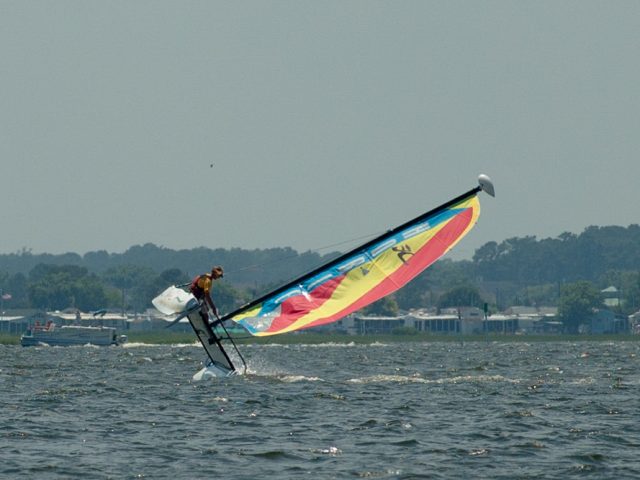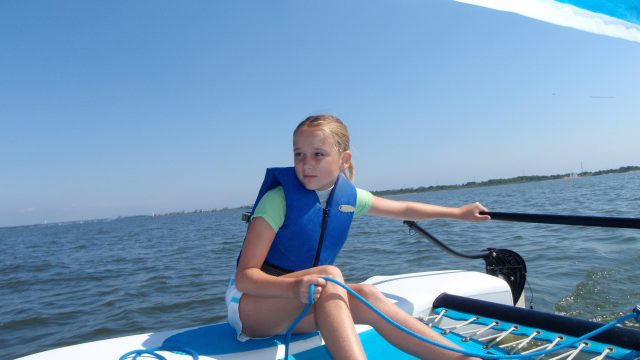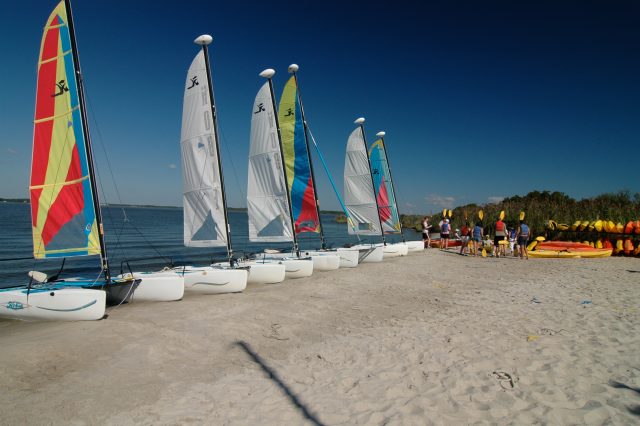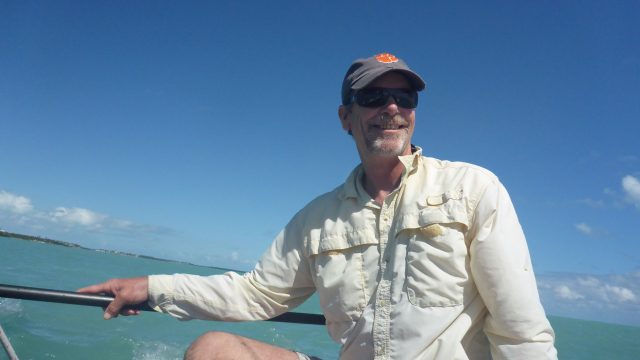Over 40 years ago, I learned to sail on a windsurfer—about as small as you can get in the realm of sailboats. Since then, I’ve sailed on nearly every size and style of sailboat up to a 52’ catamaran. Smaller boats are a lot more fun. And by far, they are the best option for learning to sail. Here’s why:
More Responsive:
I took an American Sailing Association certification class taught on a 32’ Beneteau. Its unresponsiveness shocked me. On a Hobie, you immediately feel and see the effect of the wind—the boat heels, the sail fills or begins to flap, the sheet line becomes taught, even the rudder gives you feedback as to how the boat is sailing.
On larger boats, the skipper frequently glances up. That’s because the only way they can tell the wind direction in many cases is by looking at the wind vane on top of the mast. A big heavy boat doesn’t jump in a wind gust, it takes a lot for it to roll. They are designed to be smooth and stable, which is great for multi-day cruises but not great for learning.
On the 52’ Lagoon I helped sail to Bermuda, all the controls were electronic.
You could steer, navigate, and adjusted sails by simply pushing buttons. Instead of looking up at the wind vane, you just looked at your space-shuttle-like instrument panel to see wind speed, direction, boat speed, ETA, etc. Great if you don’t want to be bothered with sailing but, once again, not good for learning.
Immediate Feedback:
I learned to windsurf on a lake in the foothills of South Carolina. The wind currents coming over those hills changed direction and speed constantly. Every time I misread a wind shift, I’d take a swim. My sailing improved tremendously in the winter when the water got cold and I didn’t want to get wet!
On a small boat (12 – 18 feet), you immediately know when you’ve done something right, and when you’ve done something wrong. Turn one way, and you pick up speed. Turn another, and you stop. That type of feedback is a great teacher. It also teaches you to read the wind which is usually the hardest thing for beginner students to grasp.
Less Confusion:
There must be some algebraic equation that calculates the number of lines (ropes) required for each additional inch of boat length. It gets a little out of control—uphaul, downhaul, boom vang, traveler, main sheet, jib sheet, etc, etc. The best boat for learning will have one sail and one line to control that sail. You learn faster and more thoroughly with fewer distractions.
More Accessible:
We have a few very simple questions sailors must answer prior to renting a boat from us. Surprisingly, folks who only have big boat sailing experience have problems answering those basic questions. On a small boat, you learn weight distribution and how to turn to avoid capsizing, or you get wet. Those aren’t really issues on a big boat.
Chances are you’ll find more opportunities to rent small boats than big boats. Regardless of the requirements of the rental business, the solid skills you learned on small boats will make for a much more enjoyable outing.
*****
I’ve been teaching sailing for over 20 years and use the 14’ Hobie Wave with a single sail for all of my beginner lessons because it is stable, responsive, and simple. Once the student learns to read the wind and master the basics, we talk about moving up to a larger boat.
But the most fun I ever had was learning to windsurf. So don’t be in a rush to upsize. In my experience, when sailing, bigger is not better!
by:
Mitch Mitchell
USCG OUPV
(AKA Capt’n Wally)
Would you like to learn more about our sailing clinics and lessons? Click here!
Want more sailing? Check out a few of our sailing videos!

